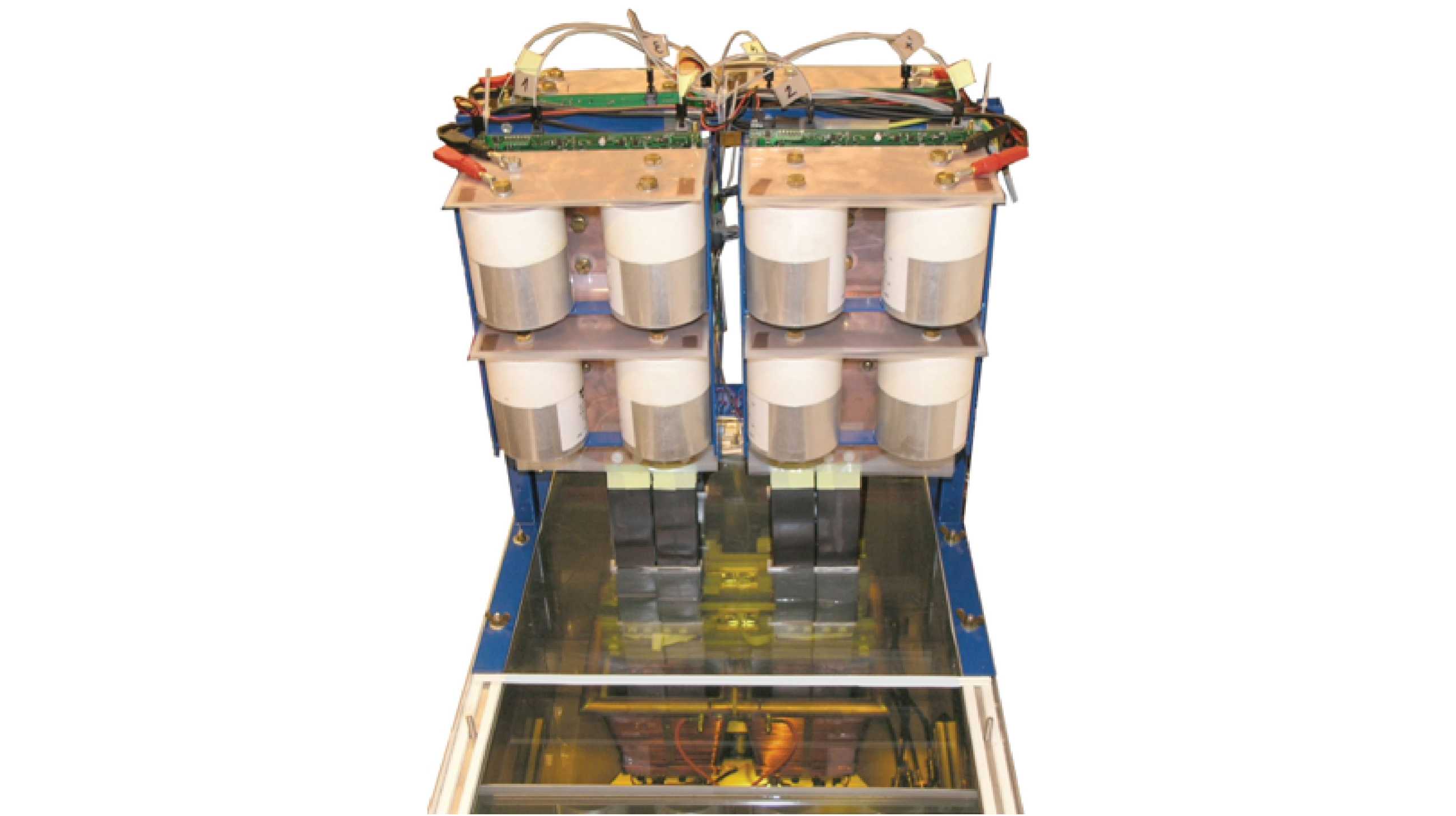The HPE-Lab
Research Areas
Founded in 2010, the Laboratory for High Power Electronic Systems (HPE) at ETH Zurich focuses its research on the design and development of ultra-efficient, high-power-density and reliable power conversion systems operating at low to high voltage levels and power levels ranging from a few watts to megawatts.
The research is based on a system-oriented view including all aspects of power electronics and related topics. The research results should enable the development of future innovative products and/or also enable power electronic systems to enter new application areas. Typical application areas of our research results are for example future energy distribution for the integration of renewable energy sources such as PV or wind, traction systems, or advanced drive systems in electric vehicles, more electric aircraft, robotics, or industrial drives. Our research into solid-state pulse modulator systems targets medical applications as cancer treatment or future particle accelerator systems at e.g. CERN, PSI or DESY, for example.
The major research areas are:
- Novel topologies & modulation concepts (e.g. multi-level/-cell topologies)
- Ultra-efficient & compact (integrated) electric drive trains including a comprehensive HF loss modelling of electric machines
- Advanced passive components (e.g. integrated cooling concepts, integrated EMI filtering, transient modelling, ultra low loss)
- Application of novel switching device technologies and packaging (e.g. PCB integrated devices and cooling concepts)
- Solid state pulse power technology (e.g. direct modulator, hybrid pulser systems, pulse transformers, ultra precise pulser modulators, etc).
- New control methods (e.g. model predictive control)
- Hardware-in-the-loop simulation systems (e.g. ultra high dynamic arbitrary AC and DC sources, control concepts).
- Energy storage systems (e.g. battery interfaces, life-time modelling of batteries)
- Multi-physics modelling in various domains:
- Electrical
- Magnetically
- Thermal
- EMI
- Reliability
- Multi-objective, mission profile oriented optimisation / sensitivity analysis / model order reduction / virtual prototyping / automated design
Multi-domain modelling of converter systems enables comprehensive optimisation at both system and component level, for example for maximum efficiency, ultra-high power density or high reliability. Based on the mission profile, the system design is optimally adapted to the requirements, minimising the use of raw materials and/or costs. Multiple objectives can also be considered simultaneously, resulting in a Pareto front or surface, as shown in Figure 1, for example, where different Pareto fronts of single-phase PFC rectifier systems are given. Based on these fronts, different topologies, modulations and also technologies can be comprehensively compared and the best design compromise could be identified.

With the developed models and the optimisation procedures also the industrial design process could be significantly accelerated enabling a shorter time-to-market.
Laboratory Facilities
For validating the models and the optimisation procedures, prototype systems based on cutting edge technology are designed and built. As an example, figure 2 shows a prototype of a 20MW pulse modulator for medical applications. There, also the pulse transformer is mechanically and magnetically optimised for a pulse with minimal overshoot and fastest possible rise time.
For performing experiments a fully equipped (low & medium voltage) laboratory with the following energy sources is available:
- 0..400V / 250kVA
- 0..800V / 250kVA
- 0..25kVAC / 250kVA
- 0..35kVDC / 250kW
- 0..2kVDC / 100kW (bidirectional)
- 400V arbitrary AC source
Additionally, a faraday cage for shielding and partial discharge tests as well as different water and air cooling facilities and a 2t crane are available.
